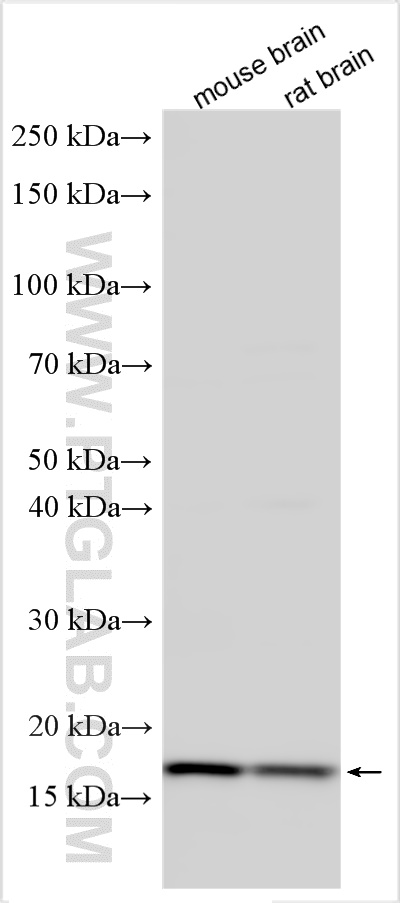验证数据展示
经过测试的应用
| Positive WB detected in | mouse brain tissue, rat brain tissue |
| Positive IF/ICC detected in | HeLa cells |
推荐稀释比
| 应用 | 推荐稀释比 |
|---|---|
| Western Blot (WB) | WB : 1:1000-1:6000 |
| Immunofluorescence (IF)/ICC | IF/ICC : 1:50-1:500 |
| It is recommended that this reagent should be titrated in each testing system to obtain optimal results. | |
| Sample-dependent, Check data in validation data gallery. | |
产品信息
12374-1-AP targets SNX12 in WB, IF/ICC, ELISA applications and shows reactivity with human, mouse, rat samples.
| 经测试应用 | WB, IF/ICC, ELISA Application Description |
| 经测试反应性 | human, mouse, rat |
| 免疫原 |
CatNo: Ag3014 Product name: Recombinant human SNX12 protein Source: e coli.-derived, T-HIS Tag: 6*His Domain: 1-162 aa of BC020559 Sequence: MSDTAVADTRRLNSKPQDLTDAYGPPSNFLEIDIFNPQTVGVGRARFTTYEVRMRTNLPIFKLKESCVRRRYSDFEWLKNELERDSKIVVPPLPGKALKRQLPFRGDEGIFEESFIEERRQGLEQFINKIAGHPLAQNERCLHMFLQEEAIDRNYVPGKSLA 种属同源性预测 |
| 宿主/亚型 | Rabbit / IgG |
| 抗体类别 | Polyclonal |
| 产品类型 | Antibody |
| 全称 | sorting nexin 12 |
| 别名 | Sorting nexin-12 |
| 计算分子量 | 172 aa, 20 kDa |
| 观测分子量 | 18 kDa |
| GenBank蛋白编号 | BC020559 |
| 基因名称 | SNX12 |
| Gene ID (NCBI) | 29934 |
| RRID | AB_3085392 |
| 偶联类型 | Unconjugated |
| 形式 | Liquid |
| 纯化方式 | Antigen affinity purification |
| UNIPROT ID | Q9UMY4 |
| 储存缓冲液 | PBS with 0.02% sodium azide and 50% glycerol, pH 7.3. |
| 储存条件 | Store at -20°C. Stable for one year after shipment. Aliquoting is unnecessary for -20oC storage. |
背景介绍
SNXs (sorting nexins) are a diverse group of cytoplasmic and membrane-associated proteins that are classified by the presence of a phospholipid-binding motif-the PX domain (PMID:12461558). SNXs are involved in endocytosis and protein trafficking. SNX12 (Sorting nexin 12) is localized in early endosomes and SNX12 overexpression specifically prevents the degradative pathway from early to late endosomes/lysosomes (PMID: 22719997). SNX12 may participate in Alzheimer's disease (AD) pathology by regulating the endocytosis of BACE1 and affecting β-processing of APP (PMID: 22709416).
实验方案
| Product Specific Protocols | |
|---|---|
| IF protocol for SNX12 antibody 12374-1-AP | Download protocol |
| WB protocol for SNX12 antibody 12374-1-AP | Download protocol |
| Standard Protocols | |
|---|---|
| Click here to view our Standard Protocols |



